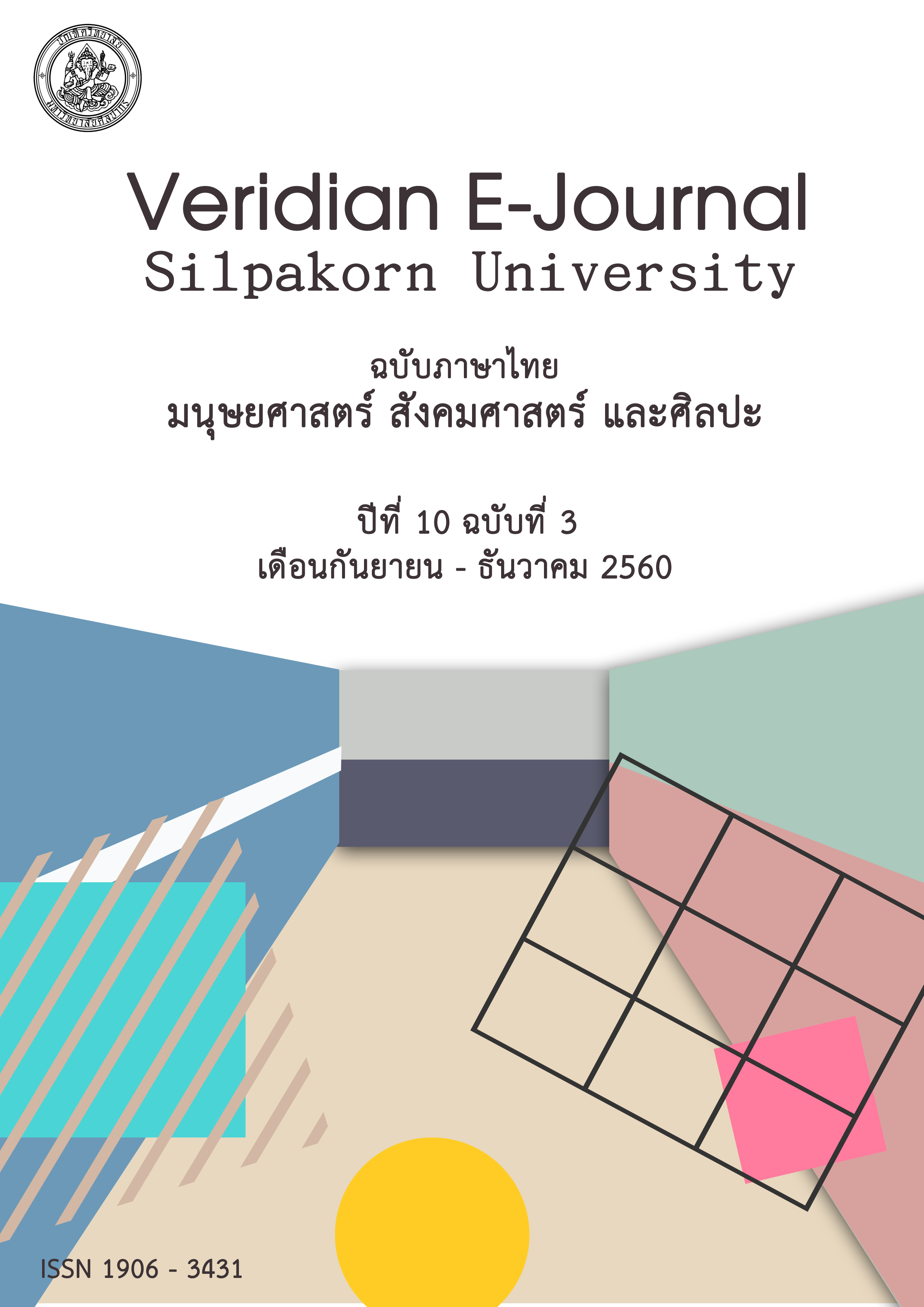ปัจจัยเชิงสาเหตุที่มีอิทธิพลต่อร่องรอยทางนิเวศของนักท่องเที่ยวในอุทยานแห่งชาติ
Main Article Content
Abstract
ร่องรอยทางนิเวศเป็นปัจจัยบ่งชี้สำคัญของผลกระทบจากกิจกรรมการท่องเที่ยวต่อสภาพแวดล้อม การวิจัยนี้มีวัตถุประสงค์เพื่อศึกษาความสัมพันธ์เชิงสาเหตุของปัจจัยที่มีอิทธิพลต่อร่องรอยทางนิเวศของนักท่องเที่ยวในอุทยานแห่งชาติ โดยใช้แบบสอบถามเป็นเครื่องมือในการเก็บข้อมูลจากนักท่องเที่ยวที่เดินทางไปเยือนอุทยานแห่งชาติเขาใหญ่และอุทยานแห่งชาติหมู่เกาะสุรินทร์ จำนวน 794 คน ใช้วิธีการวิเคราะห์โมเดลสมการโครงสร้าง (Structural Equation Model: SEM) ด้วยโปรแกรม LISRELในการสรุปผลการวิจัย พบว่าตัวแบบความสัมพันธ์เชิงสาเหตุของปัจจัยที่มีอิทธิพลต่อร่องรอยทางนิเวศของนักท่องเที่ยวในอุทยานแห่งชาติมีความสอดคล้องกับข้อมูลเชิงประจักษ์ โดยมีค่าไค-สแควร์ เท่ากับ 57.58 ค่า df เท่ากับ 45 ค่า p เท่ากับ 0.09 และมีค่า GFI เท่ากับ 0.99 ค่า RMSEA เท่ากับ 0.02 และค่า RMR เท่ากับ 0.02 ตัวแปรทั้งหมดในแบบจำลองสามารถอธิบายความแปรปรวนของร่องรอยทางนิเวศของนักท่องเที่ยวได้ร้อยละ 93.0 ตัวแปรที่มีอิทธิพลทางตรงต่อร่องรอยทางนิเวศของนักท่องเที่ยว คือ พฤติกรรมการรับผิดชอบต่อสิ่งแวดล้อม โดยมีอิทธิพลทางตรงเชิงลบด้วยค่าอิทธิพลเท่ากับ 0.09 อย่างมีนัยสำคัญทางสถิติที่ระดับ 0.05 ส่วนตัวแปรที่มีอิทธิพลทางอ้อมต่อร่องรอยทางนิเวศของนักท่องเที่ยว คือ วิถีการท่องเที่ยวและทัศนคติต่อสิ่งแวดล้อมโดยมีอิทธิพลทางอ้อมเชิงลบต่อร่องรอยทางนิเวศของนักท่องเที่ยว ด้วยค่าอิทธิพลเท่ากับ -0.18 และ -0.85 อย่างไม่มีนัยสำคัญทางสถิติ ตามลำดับ และทัศนคติต่อสิ่งแวดล้อมมีอิทธิพลทางอ้อมเชิงบวกต่อร่องรอยทางนิเวศของนักท่องเที่ยว โดยผ่านพฤติกรรมการรับผิดชอบต่อสิ่งแวดล้อม ด้วยค่าอิทธิพลเท่ากับ 0.08 อย่างไม่มีนัยสำคัญทางสถิติ
Ecological footprint is a crucial factor determining impacts from tourism activities on the environment. This research aimed to study the causal relationship model of factors influencing touristic ecological footprint in national parks. Questionnaire was used to collect data from 794 tourists who visited Khao Yai National Park and Mu Ko Surin National Park. The Structural Equation Model by LISREL program was applied to analyze the data. The study results revealed that the causal relationship model of factors influencing the touristic ecological footprint in the national parks was consistent with the empirical data, confirming by the Chi-Square score at 57.58, the degree of freedom at 45, the p-value at 0.09, the GFI value at 0.99, the RMSEA value at 0.02 and the RMR value at 0.02. All variables in the model could explain 93.0 percent of variances in the touristic ecological footprint in the national parks. Environmentally responsible behavior directly influenced the touristic ecological footprint with the negative direct effect at 0.09 and the statistical significance at the level of 0.05. Whereas the variables indirectly influenced the footprint were traveling lifestyle and attitude towards the environment with negative indirect effect at -0.18 and -0.83 without the statistical significance, respectively. Additionally, the attitude towards the environment had the positive indirect effect to the footprint through the environmentally responsible behavior with the effect value at 0.08 without the statistical significance.
